- Home
- H. P. Lovecraft
The Complete H.P. Lovecraft Collection (Xist Classics) Page 12
The Complete H.P. Lovecraft Collection (Xist Classics) Read online
Page 12
Let me be plain. The scattered objects were, so far as substance was concerned, all from Lake’s camp; and consisted of tin cans as queerly opened as those we had seen at that ravaged place, many spent matches, three illustrated books more or less curiously smudged, an empty ink bottle with its pictorial and instructional carton, a broken fountain pen, some oddly snipped fragments of fur and tent-cloth, a used electric battery with circular of directions, a folder that came with our type of tent heater, and a sprinkling of crumpled papers. It was all bad enough, but when we smoothed out the papers and looked at what was on them we felt we had come to the worst. We had found certain inexplicably blotted papers at the camp which might have prepared us, yet the effect of the sight down there in the pre-human vaults of a nightmare city was almost too much to bear.
A mad Gedney might have made the groups of dots in imitation of those found on the greenish soapstones, just as the dots on those insane five-pointed grave-mounds might have been made; and he might conceivably have prepared rough, hasty sketches—varying in their accuracy or lack of it—which outlined the neighbouring parts of the city and traced the way from a circularly represented place outside our previous route—a place we identified as a great cylindrical tower in the carvings and as a vast circular gulf glimpsed in our aërial survey—to the present five-pointed structure and the tunnel-mouth therein. He might, I repeat, have prepared such sketches; for those before us were quite obviously compiled as our own had been from late sculptures somewhere in the glacial labyrinth, though not from the ones which we had seen and used. But what this art-blind bungler could never have done was to execute those sketches in a strange and assured technique perhaps superior, despite haste and carelessness, to any of the decadent carvings from which they were taken—the characteristic and unmistakable technique of the Old Ones themselves in the dead city’s heyday.
There are those who will say Danforth and I were utterly mad not to flee for our lives after that; since our conclusions were now—notwithstanding their wildness—completely fixed, and of a nature I need not even mention to those who have read my account as far as this. Perhaps we were mad—for have I not said those horrible peaks were mountains of madness? But I think I can detect something of the same spirit—albeit in a less extreme form—in the men who stalk deadly beasts through African jungles to photograph them or study their habits. Half-paralysed with terror though we were, there was nevertheless fanned within us a blazing flame of awe and curiosity which triumphed in the end.
Of course we did not mean to face that—or those—which we knew had been there, but we felt that they must be gone by now. They would by this time have found the other neighbouring entrance to the abyss, and have passed within to whatever night-black fragments of the past might await them in the ultimate gulf—the ultimate gulf they had never seen. Or if that entrance, too, was blocked, they would have gone on to the north seeking another. They were, we remembered, partly independent of light.
Looking back to that moment, I can scarcely recall just what precise form our new emotions took—just what change of immediate objective it was that so sharpened our sense of expectancy. We certainly did not mean to face what we feared—yet I will not deny that we may have had a lurking, unconscious wish to spy certain things from some hidden vantage-point. Probably we had not given up our zeal to glimpse the abyss itself, though there was interposed a new goal in the form of that great circular place shewn on the crumpled sketches we had found. We had at once recognised it as a monstrous cylindrical tower figuring in the very earliest carvings, but appearing only as a prodigious round aperture from above. Something about the impressiveness of its rendering, even in these hasty diagrams, made us think that its sub-glacial levels must still form a feature of peculiar importance. Perhaps it embodied architectural marvels as yet unencountered by us. It was certainly of incredible age according to the sculptures in which it figured—being indeed among the first things built in the city. Its carvings, if preserved, could not but be highly significant. Moreover, it might form a good present link with the upper world—a shorter route than the one we were so carefully blazing, and probably that by which those others had descended.
At any rate, the thing we did was to study the terrible sketches—which quite perfectly confirmed our own—and start back over the indicated course to the circular place; the course which our nameless predecessors must have traversed twice before us. The other neighbouring gate to the abyss would lie beyond that. I need not speak of our journey—during which we continued to leave an economical trail of paper—for it was precisely the same in kind as that by which we had reached the cul de sac; except that it tended to adhere more closely to the ground level and even descend to basement corridors. Every now and then we could trace certain disturbing marks in the debris or litter under foot; and after we had passed outside the radius of the gasoline scent we were again faintly conscious—spasmodically—of that more hideous and more persistent scent. After the way had branched from our former course we sometimes gave the rays of our single torch a furtive sweep along the walls; noting in almost every case the well-nigh omnipresent sculptures, which indeed seem to have formed a main aesthetic outlet for the Old Ones.
About 9:30 P.M., while traversing a vaulted corridor whose increasingly glaciated floor seemed somewhat below the ground level and whose roof grew lower as we advanced, we began to see strong daylight ahead and were able to turn off our torch. It appeared that we were coming to the vast circular place, and that our distance from the upper air could not be very great. The corridor ended in an arch surprisingly low for these megalithic ruins, but we could see much through it even before we emerged. Beyond there stretched a prodigious round space—fully 200 feet in diameter—strown with debris and containing many choked archways corresponding to the one we were about to cross. The walls were—in available spaces—boldly sculptured into a spiral band of heroic proportions; and displayed, despite the destructive weathering caused by the openness of the spot, an artistic splendour far beyond anything we had encountered before. The littered floor was quite heavily glaciated, and we fancied that the true bottom lay at a considerably lower depth.
But the salient object of the place was the titanic stone ramp which, eluding the archways by a sharp turn outward into the open floor, wound spirally up the stupendous cylindrical wall like an inside counterpart of those once climbing outside the monstrous towers or ziggurats of antique Babylon. Only the rapidity of our flight, and the perspective which confounded the descent with the tower’s inner wall, had prevented our noticing this feature from the air, and thus caused us to seek another avenue to the sub-glacial level. Pabodie might have been able to tell what sort of engineering held it in place, but Danforth and I could merely admire and marvel. We could see mighty stone corbels and pillars here and there, but what we saw seemed inadequate to the function performed. The thing was excellently preserved up to the present top of the tower—a highly remarkable circumstance in view of its exposure—and its shelter had done much to protect the bizarre and disturbing cosmic sculptures on the walls.
As we stepped out into the awesome half-daylight of this monstrous cylinder-bottom—fifty million years old, and without doubt the most primally ancient structure ever to meet our eyes—we saw that the ramp-traversed sides stretched dizzily up to a height of fully sixty feet. This, we recalled from our aërial survey, meant an outside glaciation of some forty feet; since the yawning gulf we had seen from the plane had been at the top of an approximately twenty-foot mound of crumbled masonry, somewhat sheltered for three-fourths of its circumference by the massive curving walls of a line of higher ruins. According to the sculptures the original tower had stood in the centre of an immense circular plaza; and had been perhaps 500 or 600 feet high, with tiers of horizontal discs near the top, and a row of needle-like spires along the upper rim. Most of the masonry had obviously toppled outward rather than inward—a fortunate happening, since otherwise the ramp might have been shattered and the
whole interior choked. As it was, the ramp shewed sad battering; whilst the choking was such that all the archways at the bottom seemed to have been recently half-cleared.
It took us only a moment to conclude that this was indeed the route by which those others had descended, and that this would be the logical route for our own ascent despite the long trail of paper we had left elsewhere. The tower’s mouth was no farther from the foothills and our waiting plane than was the great terraced building we had entered, and any further sub-glacial exploration we might make on this trip would lie in this general region. Oddly, we were still thinking about possible later trips—even after all we had seen and guessed. Then as we picked our way cautiously over the debris of the great floor, there came a sight which for the time excluded all other matters.
It was the neatly huddled array of three sledges in that farther angle of the ramp’s lower and outward-projecting course which had hitherto been screened from our view. There they were—the three sledges missing from Lake’s camp—shaken by a hard usage which must have included forcible dragging along great reaches of snowless masonry and debris, as well as much hand portage over utterly unnavigable places. They were carefully and intelligently packed and strapped, and contained things memorably familiar enough—the gasoline stove, fuel cans, instrument cases, provision tins, tarpaulins obviously bulging with books, and some bulging with less obvious contents—everything derived from Lake’s equipment. After what we had found in that other room, we were in a measure prepared for this encounter. The really great shock came when we stepped over and undid one tarpaulin whose outlines had peculiarly disquieted us. It seems that others as well as Lake had been interested in collecting typical specimens; for there were two here, both stiffly frozen, perfectly preserved, patched with adhesive plaster where some wounds around the neck had occurred, and wrapped with patent care to prevent further damage. They were the bodies of young Gedney and the missing dog.
X.
Many people will probably judge us callous as well as mad for thinking about the northward tunnel and the abyss so soon after our sombre discovery, and I am not prepared to say that we would have immediately revived such thoughts but for a specific circumstance which broke in upon us and set up a whole new train of speculations. We had replaced the tarpaulin over poor Gedney and were standing in a kind of mute bewilderment when the sounds finally reached our consciousness—the first sounds we had heard since descending out of the open where the mountain wind whined faintly from its unearthly heights. Well known and mundane though they were, their presence in this remote world of death was more unexpected and unnerving than any grotesque or fabulous tones could possibly have been—since they gave a fresh upsetting to all our notions of cosmic harmony.
Had it been some trace of that bizarre musical piping over a wide range which Lake’s dissection report had led us to expect in those others—and which, indeed, our overwrought fancies had been reading into every wind-howl we had heard since coming on the camp horror—it would have had a kind of hellish congruity with the aeon-dead region around us. A voice from other epochs belongs in a graveyard of other epochs. As it was, however, the noise shattered all our profoundly seated adjustments—all our tacit acceptance of the inner antarctic as a waste as utterly and irrevocably void of every vestige of normal life as the sterile disc of the moon. What we heard was not the fabulous note of any buried blasphemy of elder earth from whose supernal toughness an age-denied polar sun had evoked a monstrous response. Instead, it was a thing so mockingly normal and so unerringly familiarised by our sea days off Victoria Land and our camp days at McMurdo Sound that we shuddered to think of it here, where such things ought not to be. To be brief—it was simply the raucous squawking of a penguin.
The muffled sound floated from sub-glacial recesses nearly opposite to the corridor whence we had come—regions manifestly in the direction of that other tunnel to the vast abyss. The presence of a living water-bird in such a direction—in a world whose surface was one of age-long and uniform lifelessness—could lead to only one conclusion; hence our first thought was to verify the objective reality of the sound. It was, indeed, repeated; and seemed at times to come from more than one throat. Seeking its source, we entered an archway from which much debris had been cleared; resuming our trail-blazing—with an added paper-supply taken with curious repugnance from one of the tarpaulin bundles on the sledges—when we left daylight behind.
As the glaciated floor gave place to a litter of detritus, we plainly discerned some curious dragging tracks; and once Danforth found a distinct print of a sort whose description would be only too superfluous. The course indicated by the penguin cries was precisely what our map and compass prescribed as an approach to the more northerly tunnel-mouth, and we were glad to find that a bridgeless thoroughfare on the ground and basement levels seemed open. The tunnel, according to the chart, ought to start from the basement of a large pyramidal structure which we seemed vaguely to recall from our aërial survey as remarkably well preserved. Along our path the single torch shewed a customary profusion of carvings, but we did not pause to examine any of these.
Suddenly a bulky white shape loomed up ahead of us, and we flashed on the second torch. It is odd how wholly this new quest had turned our minds from earlier fears of what might lurk near. Those other ones, having left their supplies in the great circular place, must have planned to return after their scouting trip toward or into the abyss; yet we had now discarded all caution concerning them as completely as if they had never existed. This white, waddling thing was fully six feet high, yet we seemed to realise at once that it was not one of those others. They were larger and dark, and according to the sculptures their motion over land surfaces was a swift, assured matter despite the queerness of their sea-born tentacle equipment. But to say that the white thing did not profoundly frighten us would be vain. We were indeed clutched for an instant by a primitive dread almost sharper than the worst of our reasoned fears regarding those others. Then came a flash of anticlimax as the white shape sidled into a lateral archway to our left to join two others of its kind which had summoned it in raucous tones. For it was only a penguin—albeit of a huge, unknown species larger than the greatest of the known king penguins, and monstrous in its combined albinism and virtual eyelessness.
When we had followed the thing into the archway and turned both our torches on the indifferent and unheeding group of three we saw that they were all eyeless albinos of the same unknown and gigantic species. Their size reminded us of some of the archaic penguins depicted in the Old Ones’ sculptures, and it did not take us long to conclude that they were descended from the same stock—undoubtedly surviving through a retreat to some warmer inner region whose perpetual blackness had destroyed their pigmentation and atrophied their eyes to mere useless slits. That their present habitat was the vast abyss we sought, was not for a moment to be doubted; and this evidence of the gulf’s continued warmth and habitability filled us with the most curious and subtly perturbing fancies.
We wondered, too, what had caused these three birds to venture out of their usual domain. The state and silence of the great dead city made it clear that it had at no time been an habitual seasonal rookery, whilst the manifest indifference of the trio to our presence made it seem odd that any passing party of those others should have startled them. Was it possible that those others had taken some aggressive action or tried to increase their meat supply? We doubted whether that pungent odour which the dogs had hated could cause an equal antipathy in these penguins; since their ancestors had obviously lived on excellent terms with the Old Ones—an amicable relationship which must have survived in the abyss below as long as any of the Old Ones remained. Regretting—in a flareup of the old spirit of pure science—that we could not photograph these anomalous creatures, we shortly left them to their squawking and pushed on toward the abyss whose openness was now so positively proved to us, and whose exact direction occasional penguin tracks made clear.
Not long
afterward a steep descent in a long, low, doorless, and peculiarly sculptureless corridor led us to believe that we were approaching the tunnel-mouth at last. We had passed two more penguins, and heard others immediately ahead. Then the corridor ended in a prodigious open space which made us gasp involuntarily—a perfect inverted hemisphere, obviously deep underground; fully an hundred feet in diameter and fifty feet high, with low archways opening around all parts of the circumference but one, and that one yawning cavernously with a black arched aperture which broke the symmetry of the vault to a height of nearly fifteen feet. It was the entrance to the great abyss.
In this vast hemisphere, whose concave roof was impressively though decadently carved to a likeness of the primordial celestial dome, a few albino penguins waddled—aliens there, but indifferent and unseeing. The black tunnel yawned indefinitely off at a steep descending grade, its aperture adorned with grotesquely chiselled jambs and lintel. From that cryptical mouth we fancied a current of slightly warmer air and perhaps even a suspicion of vapour proceeded; and we wondered what living entities other than penguins the limitless void below, and the contiguous honeycombings of the land and the titan mountains, might conceal. We wondered, too, whether the trace of mountain-top smoke at first suspected by poor Lake, as well as the odd haze we had ourselves perceived around the rampart-crowned peak, might not be caused by the tortuous-channelled rising of some such vapour from the unfathomed regions of earth’s core.
Entering the tunnel, we saw that its outline was—at least at the start—about fifteen feet each way; sides, floor, and arched roof composed of the usual megalithic masonry. The sides were sparsely decorated with cartouches of conventional designs in a late, decadent style; and all the construction and carving were marvellously well preserved. The floor was quite clear, except for a slight detritus bearing outgoing penguin tracks and the inward tracks of those others. The farther one advanced, the warmer it became; so that we were soon unbuttoning our heavy garments. We wondered whether there were any actually igneous manifestations below, and whether the waters of that sunless sea were hot. After a short distance the masonry gave place to solid rock, though the tunnel kept the same proportions and presented the same aspect of carved regularity. Occasionally its varying grade became so steep that grooves were cut in the floor. Several times we noted the mouths of small lateral galleries not recorded in our diagrams; none of them such as to complicate the problem of our return, and all of them welcome as possible refuges in case we met unwelcome entities on their way back from the abyss. The nameless scent of such things was very distinct. Doubtless it was suicidally foolish to venture into that tunnel under the known conditions, but the lure of the unplumbed is stronger in certain persons than most suspect—indeed, it was just such a lure which had brought us to this unearthly polar waste in the first place. We saw several penguins as we passed along, and speculated on the distance we would have to traverse. The carvings had led us to expect a steep downhill walk of about a mile to the abyss, but our previous wanderings had shewn us that matters of scale were not wholly to be depended on.

 The Best of H.P. Lovecraft
The Best of H.P. Lovecraft The Definitive H.P. Lovecraft: 67 Tales Of Horror In One Volume
The Definitive H.P. Lovecraft: 67 Tales Of Horror In One Volume The Complete Works of H.P. Lovecraft
The Complete Works of H.P. Lovecraft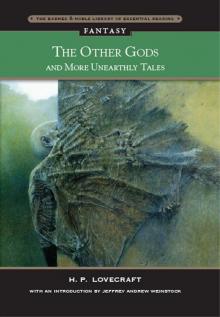 Other Gods and More Unearthly Tales
Other Gods and More Unearthly Tales Lovecraft's Fiction Volume I, 1905-1925
Lovecraft's Fiction Volume I, 1905-1925 The Shadow Out of Time
The Shadow Out of Time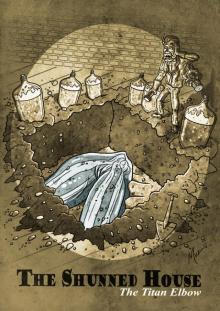 The Shunned House
The Shunned House Lovecraft's Fiction Volume II, 1926-1928
Lovecraft's Fiction Volume II, 1926-1928 The Thing on the Doorstep and Other Weird Stories
The Thing on the Doorstep and Other Weird Stories Dream Cycle of H. P. Lovecraft: Dreams of Terror and Death
Dream Cycle of H. P. Lovecraft: Dreams of Terror and Death Great Tales of Horror
Great Tales of Horror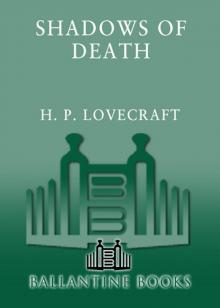 Shadows of Death
Shadows of Death Delphi Complete Works of H. P. Lovecraft (Illustrated)
Delphi Complete Works of H. P. Lovecraft (Illustrated) Waking Up Screaming: Haunting Tales of Terror
Waking Up Screaming: Haunting Tales of Terror H.P. Lovecraft Goes to the Movies
H.P. Lovecraft Goes to the Movies The Road to Madness
The Road to Madness The Complete H.P. Lovecraft Reader (68 Stories)
The Complete H.P. Lovecraft Reader (68 Stories)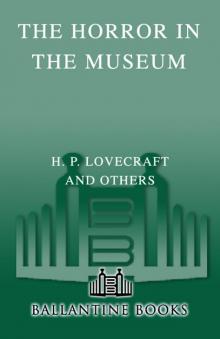 The Horror in the Museum
The Horror in the Museum Collected Fiction Volume 1 (1905-1925): A Variorum Edition
Collected Fiction Volume 1 (1905-1925): A Variorum Edition Lovecrafts_Fiction, vol.I_1905-1925
Lovecrafts_Fiction, vol.I_1905-1925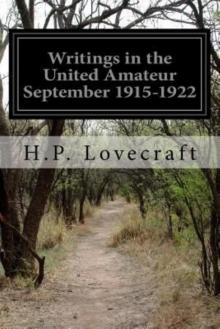 Writings in the United Amateur, 1915-1922
Writings in the United Amateur, 1915-1922 H.P. Lovecraft: The Complete Works
H.P. Lovecraft: The Complete Works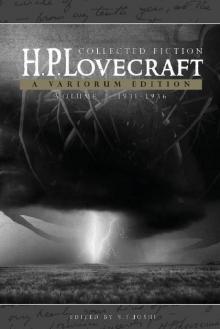 Collected Fiction Volume 3 (1931-1936): A Variorum Edition
Collected Fiction Volume 3 (1931-1936): A Variorum Edition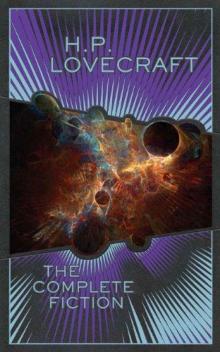 H.P. Lovecraft: The Complete Fiction
H.P. Lovecraft: The Complete Fiction Collected Fiction Volume 2 (1926-1930): A Variorum Edition
Collected Fiction Volume 2 (1926-1930): A Variorum Edition Yog Sothothery - The Definitive H.P. Lovecraft Anthology
Yog Sothothery - The Definitive H.P. Lovecraft Anthology The Complete H.P. Lovecraft Collection (Xist Classics)
The Complete H.P. Lovecraft Collection (Xist Classics)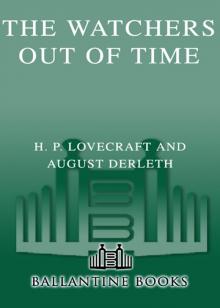 The Watchers Out of Time
The Watchers Out of Time Eldritch Tales
Eldritch Tales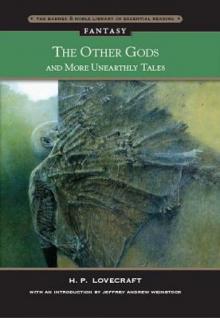 The Other Gods And More Unearthly Tales
The Other Gods And More Unearthly Tales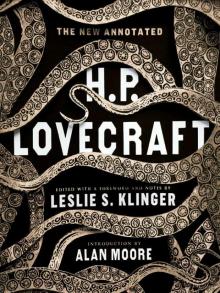 The New Annotated H. P. Lovecraft
The New Annotated H. P. Lovecraft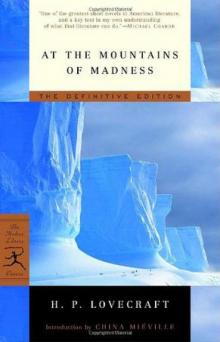 At the mountains of madness
At the mountains of madness Bloodcurdling Tales of Horror and the Macabre
Bloodcurdling Tales of Horror and the Macabre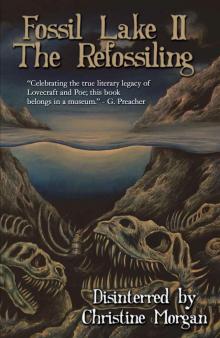 Fossil Lake II: The Refossiling
Fossil Lake II: The Refossiling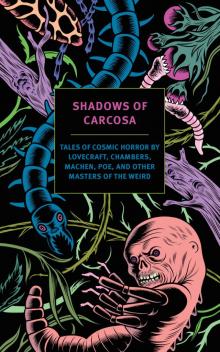 Shadows of Carcosa: Tales of Cosmic Horror by Lovecraft, Chambers, Machen, Poe, and Other Masters of the Weird
Shadows of Carcosa: Tales of Cosmic Horror by Lovecraft, Chambers, Machen, Poe, and Other Masters of the Weird H. P. Lovecraft
H. P. Lovecraft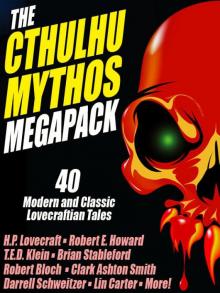 The Cthulhu Mythos Megapack
The Cthulhu Mythos Megapack The Complete H. P. Lovecraft Reader (2nd Edition)
The Complete H. P. Lovecraft Reader (2nd Edition)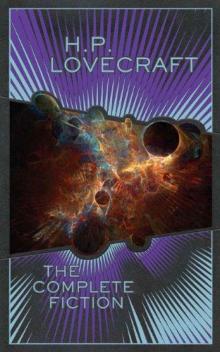 The Complete Fiction
The Complete Fiction Waking Up Screaming
Waking Up Screaming Transition of H. P. Lovecraft
Transition of H. P. Lovecraft![[1935] The Shadow Out of Time Read online](http://i1.bookreadfree.com/i2/04/12/1935_the_shadow_out_of_time_preview.jpg) [1935] The Shadow Out of Time
[1935] The Shadow Out of Time The Horror Megapack
The Horror Megapack